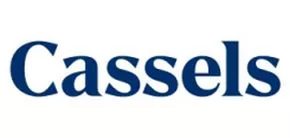- within Food, Drugs, Healthcare, Life Sciences, Cannabis & Hemp, Litigation and Mediation & Arbitration topic(s)
- with Senior Company Executives, HR and Finance and Tax Executives
- with readers working within the Business & Consumer Services, Healthcare and Media & Information industries
In a previous article available, we considered the prevalence of "liability management" activity — often referred to as "LMEs" (liability management exercises) or "LMTs" (liability management transactions) — in the US and European markets. We discussed two common types of LMEs and how permissive covenant packages and increasingly onerous costs of formal bankruptcy proceedings have changed the default and pre-default landscape in the US and Europe.1
Recent data suggests that half of all global defaults involved some type of private workout or LME, including "distressed exchanges."2 For Canadian borrowers tapping the US and European debt markets, LMEs are already here. Mitel, a Canadian company, implemented an LME last year. Conuma Resources, a coal mining business headquartered in British Columbia, effected a non-pro-rata uptier of its senior bonds just last month. Conuma appears to be one of the first Canadian businesses with operations primarily in Canada to implement an LME. Many other Canadian borrowers have quietly completed LMEs, too. Meanwhile, Canadian lenders lending in US and European debt markets are also familiar with LMEs.
Why have we seen fewer special situations and LMEs in Canada? Probably a combination of the lack of flexibilities built into domestic debt documents and perceptions on how effective Canadian insolvency processes are. LMEs seem to be increasingly common where documents are flexible and where insolvency proceedings are thought of as expensive or unpredictable. But LMEs have a place in the Canadian market and can provide an alternative means of addressing distress before things become so bad that enforcement steps, receiverships, stay orders, or emergency debtor in possession funding is required. While often associated with splashy lender-on-lender violence, LMEs, at their core, are out-of-court processes designed to address financial difficulties, either using the pre-baked permissions in existing debt documents or amending those documents consensually. Canadian companies have long used similar types of tools to address financial difficulties, but workouts have rarely been thought of as a distinct transaction type. Domestically, LME-style transactions do occur, but rarely involve the lender-on-lender violence seen in uptier transactions like Serta Simmons, Mitel, or more recently in Conuma.
Describing certain transactions as LMEs is still rarer north of the border. Typical LMEs are more infrequent in domestic deals, in part due to the smaller Canadian debt market. In Canada, the liquidity of loan paper is lesser, the number of lenders in loans is often fewer, the ecosystem for distressed investors is narrower, and the terms of credit agreements are often more restrictive and therefore require more creative structuring solutions. But these differences are opportunities for those looking for them:
Using US covenant technologies may afford creative lenders strategic advantages when competing against others for deals. Simply put, Canadian debt documents often do not have the same degree of permissibility or basket capacity as one would typically find in US or European governed debt documents. The latest covenant technologies in borrower-friendly markets provide enhanced flexibilities for borrowers. Lender-driven terms do not afford borrowers many of those covenant flexibilities. As a general rule, US private credit documents are tighter than high-yield or broadly syndicated documents. Canadian broadly syndicated debt is often tighter than all of them, including those private credit documents. There is potentially a strategic advantage for lenders willing to be flexible on covenants and look at other markets for new technologies. But a caution: even existing debt documents in Canada have pre-baked permissions that can be used for generating additional liquidity without requiring lender consent. As global capital flows change and new sponsors and private capital funds arrive to Canada, these new players may have advantages by being willing to borrow technologies from other markets. Lenders looking to invest in Canada may find offering more flexible covenants gives them a strategic advantage in winning deals while market sentiment may mean borrowers are less inclined to use those flexibilities in the same way an American borrower might.
Smaller market size allows lenders to cooperate and defend themselves against non-consensual LMEs. Fewer lenders in a group makes coordination easier. In Canada, lenders are less likely to sub-participate their positions. The market may not be large enough to burn a Schedule 1 Bank relationship using an aggressive LME structure. As a result, most LMEs are likely, at least for the foreseeable future, not going to be lender-on-lender. Upsetting a co-investor by uptiering them is a quick way to being left out of the next deal. In other markets, original lenders often "trade out" of even private debt documents. These exits play a crucial role in recycling debt markets. Such recycling is less common in Canada. Lenders here have historically been hesitant to mark private loans to market and prefer to see the deal through to refinancing or receivership/CCAA. The all-or-nothing mentality rubs against what LMEs ideally seek to achieve: reaching a (mostly) consensual, out-of-court deal to write-off debt or extend a debt runway in the hopes that cutting off the limb will save the patient. That said, secondary debt trading in Canada appears to be changing. We've had many conversations with domestic and foreign distressed and special situation funds looking to Canadian credit opportunities. Secondary traders looking to participate may find more opportunities at better pricing than are available in the finely combed European and US debt markets.
Smaller market size creates pricing opportunities and also requires fewer parties to agree to implement LMEs. Fewer lenders make pricing more illiquid. That may mean far greater volatility in pricing and pricing opportunities. For example, in the days before the Mitel judgment, we identified a pricing opportunity between the new 2L Mitel debt trading at $0.03 and the old 2L (and the new 4L post-Uptier) Mitel debt trading at $0.05.
Fewer lenders also means that borrowers may find it easier to reach the necessary majority consent threshold by having conversations with a handful of strategic lenders as opposed to having to use a solicitation process. European commentators once made the same points we raise about Canada as to why lender-on-lender violence was absent from the continent. After Arghdah, and At Home Group, the argument holds less weight.
We suspect that as US and European financial sponsors navigate their way through macroeconomic and geopolitical challenges, they will seek new markets such as Canada and bring with them covenant terms and flexibilities that they have been accustomed to in those other markets. While many current Canadian debt documents are restrictive, there remains some flexibilities. Lenders will want to utilize the latest LME blockers in credit agreements; borrowers will want to understand LME capacities in their current debt documents (if any) or what to ask for and seek when entering into different financing arrangements; and secondary traders will want to understand the risks inherent in the debt documents underpinning their trades.
Footnotes
1. Barclays FICC Research Credit Strategy, 29 July 2024
2. Barclays FICC Research Credit Strategy (Corry Short and Bradley Rogoff), High Yield & Leveraged Loans LME: Trading through Prisoner's Dilemmas (Barclays, 29 July 2024) https://publicresearch.barclays.com accessed 2 June 2025.
The content of this article is intended to provide a general guide to the subject matter. Specialist advice should be sought about your specific circumstances.




